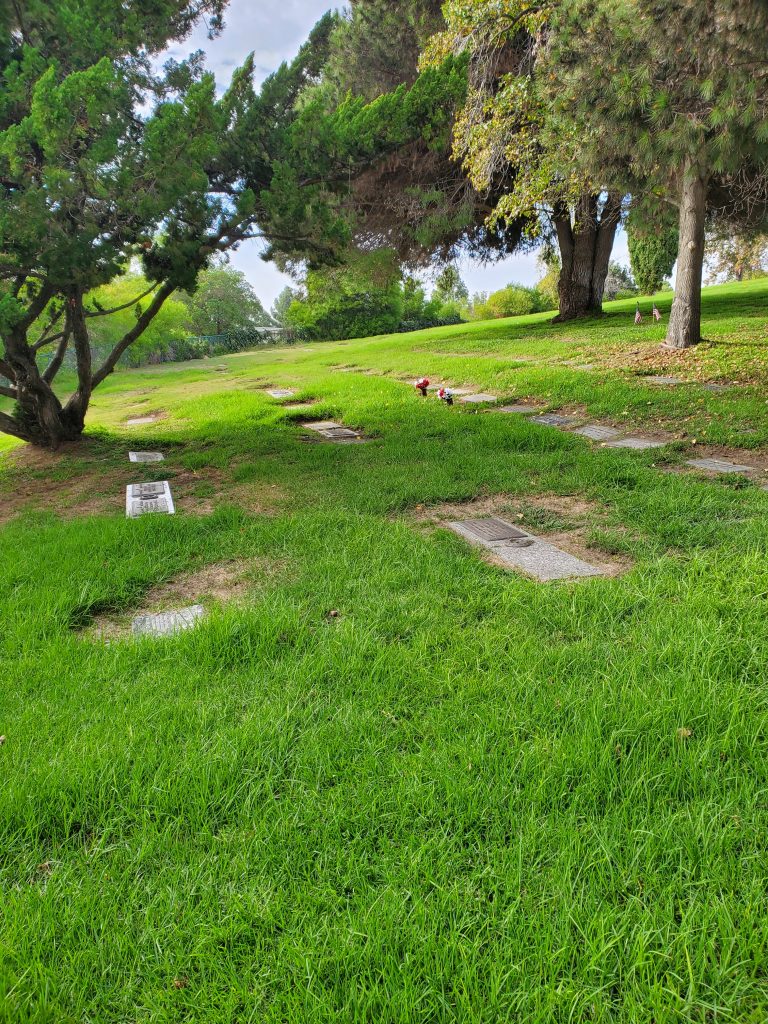This is trivia quiz 2 covering united states cemetery history and facts. These quizzes also appeal to history buffs!

Helpful links:
The grave mysteries of Calico’s historic cemetery – CalEXPLORnia
African Burial Ground National Monument (U.S. National Park Service) (nps.gov)
Question 1: The oldest known “organized” Native American cemetery is:
A. The Windover site, near Titusville, Florida
B. At Wounded Knee, North Dakota
C. Near the original Pilgrim settlement at Plymouth Rock, Massachusetts
D. The Northern half of the Boot Hill cemetery at Anchorage, Alaska
Question 2: What does this phrase about burying married couples mean: “buried as they were married”?
A. It’s just a superstition among funeral directors.
B. It means that married couples must keep their wedding outfits in good condition. That way, they can buried in the same outfits
C. As you stand at the “foot end” of the grave. The husband is to the right, the wife is to the left. Both are “facing East”
D. If buried in this position, the couple will “rise from the grave” facing East. This way, they can stand together “at the Rapture.”
E. Answers C and D
Question 3: What is the link between Knott’s Berry Farm in Buena Park, California, and the cemetery at Calico Ghost Town in San Bernardino County?
A. Walter Knott was interested in ghost towns. This influenced the creation of Knott’s Berry Farm.
B. The Knott family lived in Calico Ghost Town. Walter explored it as a kid.
C. The “cemetery” at Knott’s Berry Farm is an exact copy, minus the bodies, of the Calico cemetery
D. There is a cenotaph in the Calico cemetery with Walter Knott’s name. His body is in a grave in the Old West Cemetery at Knott’s Berry Farm
E. Answers A and C
Question 4: Sakakawea (Sacagawea) was a Lemhi Shoshone, born in Idaho. She was a guide and cultural ambassador for the Lewis & Clark Expedition. Birth and death records for Native American Women in the 1800s are not complete. There is controversy over the location of her grave site.
A. Her grave is in Arlington National Cemeter to recognize her support of the Lewis & Clark Expedition
B. She is buried in the Shoshone Tribal cemetery near her birthplace in Idaho
C. She is probably buried in the Sacajawea Cemetery on the Wind River Reservation in Wyoming
D. She is probably buried in the Idaho National Cemetery in Boise
Question 5: the “Confederate Mound” is in the Oak Woods Cemetery in Chicago, Illinois. it was built to accommodate the remains of Confederate soldiers that died as prisoners of war nearby at Camp Douglas. The monument includes the names of over 4,200 known Confederate soldiers. It has the headstones of 12 Union soldiers. They were assigned to guard the prisoners at Camp Douglas.
A. It is recognized as a military veteran burial site
B. It may be the largest mass burial site in the Western Hemisphere
C. The creation of Confederate Mound pressured the City of Chicago to open Oak Woods Cemetery
D. Answers A and B
Question 6: The April 1898 klondike gold rush. the men were nicknamed “stampeders.” a common route passed through Skagway, Alaska. dozens of men died in an avalanche near dyea, inland from skagway
A. Local reporters named it the Gold Rush Glacier Accident
B. Slide Cemetery was established near Dyea to avoid having to transport the bodies back to Skagway
C. Local reporters named it the Palm Sunday Avalanche
D. Answers B and C
E. Answers A and B
Question 7: A non-profit organization created in Orange County, North Carolina to “restore and educate” about the “historic Indian trading path” in Orange County, including burial mounds, a cemetery, and a “historic timeline fence” path:
A. Apache Tribal Center
B. North Carolina Panthers
C. Indigenous Memories
D. Smithsonian Museum
Question 8: Requirements for non-profit cemetery organizations in the United States:
A. Provide plots or columbarium space for whole body burials or cremated remains
B. Ground plots or columbarium niches can be purchased by organization members for their personal or family use. Those spaces cannot be resold
C. The non-profit cannot run a mortuary or funeral home service. The cemetery has to be the sole business
D. All the above (A, B, and C)
Question 9: Why aren’t there any in-ground burials in Saint Louis Cemetery #1, the oldest cemetery in New Orleans?
A. The ground is too hard to dig with a shovel
B. Local funeral directors did not have tools to dig proper in-ground graves
C. French and Spanish cultural practices were a major influence in the early days of the city
D. The “water table” is very shallow, threatening to flood any in-ground burial
E. C and D
Question 10: The “African Burial Ground” in New York City:

A. Is the oldest and largest known burial ground in North America for free and enslaved Africans
B. It is a cultural center in the Bronx. African-Americans can write down and “bury” their past sins
C. The site was slated to be a new building in Manhattan. An Archeology survey found the burials.
D. A and C
About the author – Cultures and Graves
Leave a Reply